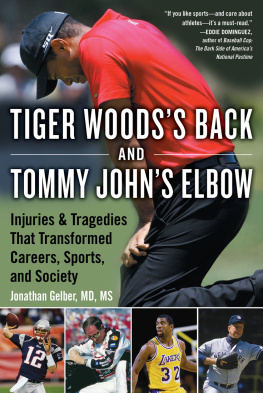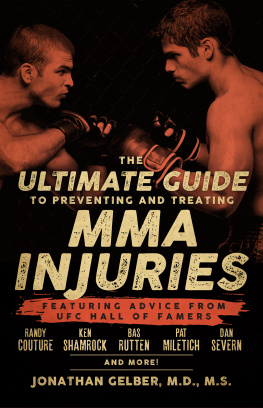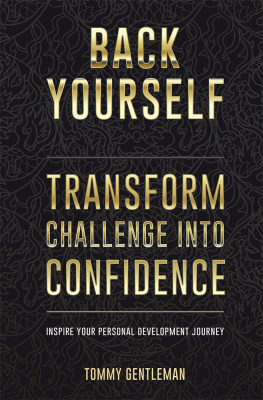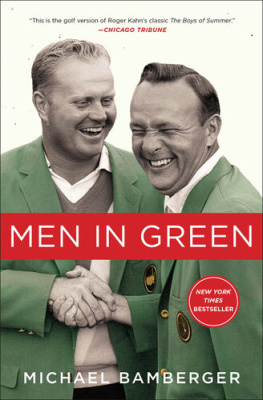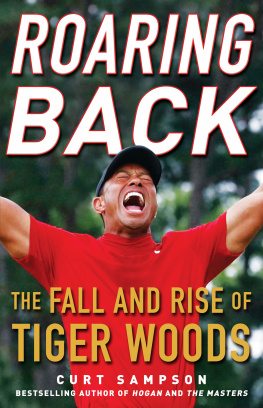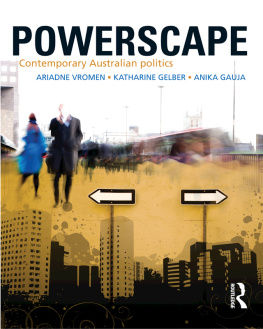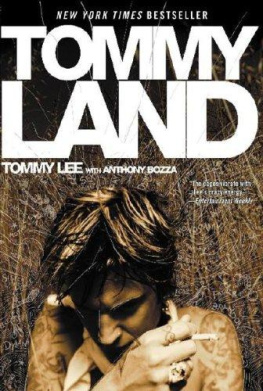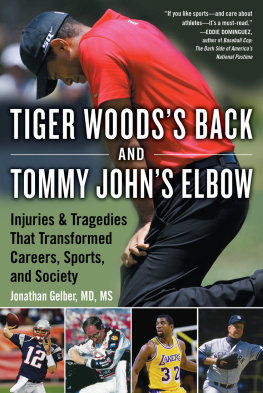Gelber - Tiger Woodss Back and Tommy Johns Elbow
Here you can read online Gelber - Tiger Woodss Back and Tommy Johns Elbow full text of the book (entire story) in english for free. Download pdf and epub, get meaning, cover and reviews about this ebook. year: 2019, publisher: Sports Publishing, genre: Home and family. Description of the work, (preface) as well as reviews are available. Best literature library LitArk.com created for fans of good reading and offers a wide selection of genres:
Romance novel
Science fiction
Adventure
Detective
Science
History
Home and family
Prose
Art
Politics
Computer
Non-fiction
Religion
Business
Children
Humor
Choose a favorite category and find really read worthwhile books. Enjoy immersion in the world of imagination, feel the emotions of the characters or learn something new for yourself, make an fascinating discovery.
- Book:Tiger Woodss Back and Tommy Johns Elbow
- Author:
- Publisher:Sports Publishing
- Genre:
- Year:2019
- Rating:5 / 5
- Favourites:Add to favourites
- Your mark:
- 100
- 1
- 2
- 3
- 4
- 5
Tiger Woodss Back and Tommy Johns Elbow: summary, description and annotation
We offer to read an annotation, description, summary or preface (depends on what the author of the book "Tiger Woodss Back and Tommy Johns Elbow" wrote himself). If you haven't found the necessary information about the book — write in the comments, we will try to find it.
Gelber: author's other books
Who wrote Tiger Woodss Back and Tommy Johns Elbow? Find out the surname, the name of the author of the book and a list of all author's works by series.
Tiger Woodss Back and Tommy Johns Elbow — read online for free the complete book (whole text) full work
Below is the text of the book, divided by pages. System saving the place of the last page read, allows you to conveniently read the book "Tiger Woodss Back and Tommy Johns Elbow" online for free, without having to search again every time where you left off. Put a bookmark, and you can go to the page where you finished reading at any time.
Font size:
Interval:
Bookmark:


Copyright 2019 by Jonathan Gelber
All rights reserved. No part of this book may be reproduced in any manner without the express written consent of the publisher, except in the case of brief excerpts in critical reviews or articles. All inquiries should be addressed to Sports Publishing, 307 West 36th Street, 11th Floor, New York, NY 10018.
Sports Publishing books may be purchased in bulk at special discounts for sales promotion, corporate gifts, fund-raising, or educational purposes. Special editions can also be created to specifications. For details, contact the Special Sales Department, Sports Publishing, 307 West 36th Street, 11th Floor, New York, NY 10018 or .
Sports Publishing is a registered trademark of Skyhorse Publishing, Inc., a Delaware corporation.
Visit our website at www.sportspubbooks.com.
10 9 8 7 6 5 4 3 2 1
Library of Congress Cataloging-in-Publication Data is available on file.
Cover design by Tom Lau
Cover photo credit Associated Press (Tiger Woods) and Getty Images
ISBN: 978-1-68358-258-8
Ebook ISBN: 978-1-68358-259-5
Printed in the United States of America
To my four amazing and unique children, Liam, Odin, Noah, and Ella
Contents
INTRODUCTION
The Cobra Effect
L EGEND HAS IT THAT DURING the time of colonial India, when the land was ruled by the British crown, a concern grew among the local leaders of Delhi. They approached the British Raj with whispers of a slow venomous snake invasion. Among the invaders was one snake that was the most feared of allthe mighty cobra. Even today, few animals ignite such a level of fear simply by raising their heads. Dabs of color speckle across its broad head and harken back to the crowns of pharaohs. A simple flick of its forked tongue warns all who approach of its dagger-like fatal quickness. For centuries, the only weapon in India against these fearsome creatures was the droning sound of snake charmers. Wrapped in turbans and surrounded by baskets, these mysterious men seemed to hypnotize the formidable creatures gaze aided only by a musical instrument. Despite their temporary powers of control, these men did nothing to defeat the snake and its invasion. They neither hunted nor killed them. As traditional mystic healers, many of them were trained to handle snakes, and snake bites, but their skill set levied no control over the snake population. And so the number of snakes grew, as did the local leaders concern.
The British Raj had an idea. Like any dangerous outlaw demanded, a bounty would be placed on the cobra snake. The people of Delhi would turn against the invading force. They would be rewarded for bringing the Raj the skins of dead cobras. Surely, thought the local leaders, this would solve the problem of too many poisonous snakes. It began with a trickle, but soon a deluge of rewards was being handed out as baskets with snake skins piled up.
At first, the Raj and local leaders were proud of what unfolded. Clearly, they were winning the war. The cobra population was withering by the basketload. And yet whispers fluttered in the background. The bounty didnt seem to be making much difference. The snakes still tormented the villages. Were there really that many snakes to be caught in the first place? How big was this cobra invasion really?
Then the whispers grew into rumors and reached the Raj himself. Where were these snakes coming from? Were they really wild? So the Raj sent local leaders out into the villages to investigate. It didnt take long for the local government to uncover the plot. The people of Delhi were breeding cobras on their own in order to kill them and turn the snakeskins in for the reward money. Once the Raj learned of this subterfuge, he immediately scrapped the reward program. As the news of the reward programs cancellation spread from village to village, the snake breeders became very angry. What were they to do now with thousands of unwanted and unvaluable cobras? Without a market to sell them, they released the black reptiles. The freed snakes slithered into the wild and spread across the villages. With that, the wild cobra population in Delhi skyrocketed, resulting in the exact opposite consequence than the original program had intended. In the end, the reactive solution crafted by the Raj actually ended up making the problem worse.
This story has since been used to illustrate what happens when an attempted solution to a problem results in an unintended consequence. As with the case of the Rajs reward program, the consequence can even make the original problem worse. When this happens, it is dubbed The Cobra Effect. We often recognize that sometimes things just dont go how we expected. We can plan for all contingencies and have the best intentions in mind, but sometimes these best-laid plans can result in unintended consequences. We miss connections to other parties. We fail to plan for the long term. We may simply swap out one problem for another. We can even misinterpret the data in front of us. And other times, we may miss an opportunity to address a problem before it becomes bigger. These mistakes are all part of being human. But oftentimes it makes sense to take a step back and focus on the big picture; then maybe, armed with the knowledge that unintended consequences do exist, we can start to win our own battle against the cobra. This book explores various examples of the Cobra Effect in the world of sports and what lessons we can glean and apply going forward.
Sandy Koufax, Tommy John, and an Epidemic
A SK ANY DOCTOR OR JOURNALIST to name an injury that changed the face of sports as we know it, and invariably the name Tommy John comes to mind. Tommy John surgery, or TJ surgery as some call it, has become the subject of numerous books and countless articles as more and more professional pitchers undergo what is considered a career-saving surgery. Yet, the story does not stop there. In fact, despite, or possibly because of, the career-saving surgery, we are amidst an epidemic. So much so, that both the major league pitcher Tommy John and his own son are worried about todays teenagers. The term the 288-win pitcher uses is appalling. But to fully understand the story of the surgery that was first performed on the elder Tommy John in 1974, we have to go back a decade earlier.
On April 22, 1964, the defending national champion Los Angeles Dodgers were in the midst of a six-game losing streak when they faced off midweek against the St. Louis Cardinals. That Wednesday, Sandy Koufax, the National Leagues most valuable player, struggled almost immediately. It was only one inning in, but a crowd of 31,410, one of the largest to see a home opener in St. Louis, was already on its feet. Koufax had struck out the first two Cardinals, but the third batter, Bill White, managed to get to first thanks to a wild third strike that sailed past the catcher. The next batter, Ken Boyer, was walked on four straight pitches. It was two outs with two men on, and the Cardinals Charley James stepped to the plate. Koufax battled to a count of two balls and two strikes. He threw the next pitch high and away. The batter reached out, swung, and connected, sending the ball to the opposite-field rooftop. The crowd roared as Koufax gave up a three-run homer.
When the inning was finally over, the left-hander returned to the dugout and began to complain about his throwing elbow. It was a culmination of weeks of pain he had been trying to grit his teeth and play through. Later in the dressing room, Koufax, with an icepack on his injured arm, would tell the Associated Press, It hurts like heck. Ive had it for three weeks. I havent had anything on the ball in any of my starts. I was just lucky to get by until now. But it got me out there tonight.
Next pageFont size:
Interval:
Bookmark:
Similar books «Tiger Woodss Back and Tommy Johns Elbow»
Look at similar books to Tiger Woodss Back and Tommy Johns Elbow. We have selected literature similar in name and meaning in the hope of providing readers with more options to find new, interesting, not yet read works.
Discussion, reviews of the book Tiger Woodss Back and Tommy Johns Elbow and just readers' own opinions. Leave your comments, write what you think about the work, its meaning or the main characters. Specify what exactly you liked and what you didn't like, and why you think so.

